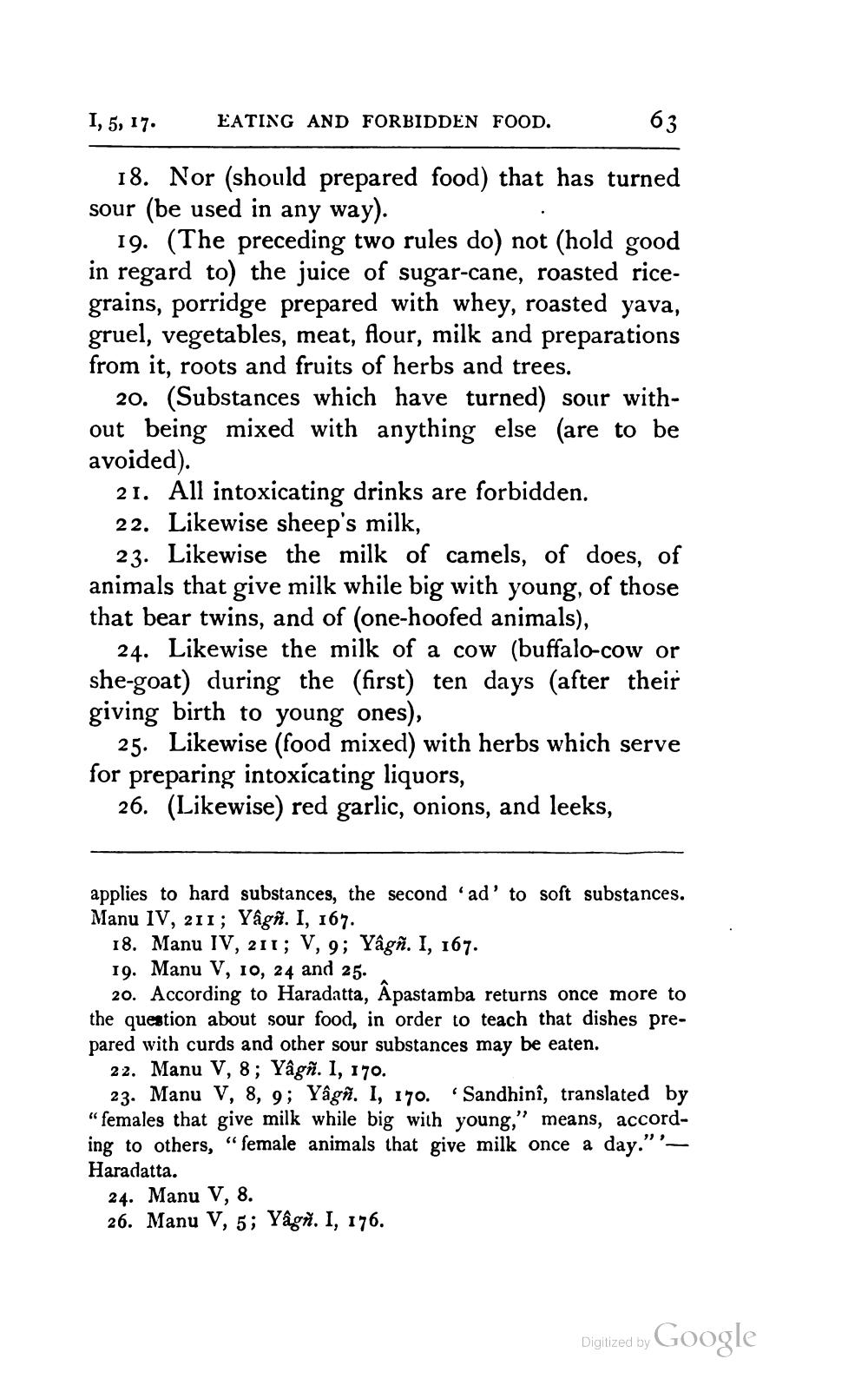________________
1, 5, 17.
EATING AND FORBIDDEN FOOD.
63
18. Nor (should prepared food) that has turned sour (be used in any way).
19. (The preceding two rules do) not (hold good in regard to the juice of sugar-cane, roasted ricegrains, porridge prepared with whey, roasted yava, gruel, vegetables, meat, flour, milk and preparations from it, roots and fruits of herbs and trees.
20. (Substances which have turned) sour without being mixed with anything else (are to be avoided).
21. All intoxicating drinks are forbidden. 22. Likewise sheep's milk,
23. Likewise the milk of camels, of does, of animals that give milk while big with young, of those that bear twins, and of (one-hoofed animals),
24. Likewise the milk of a cow (buffalo-cow or she-goat) during the (first) ten days (after their giving birth to young ones),
25. Likewise (food mixed) with herbs which serve for preparing intoxicating liquors,
26. (Likewise) red garlic, onions, and leeks,
u V, 10, 24 and 25: Åpastamba returns hat dishes pre
applies to hard substances, the second 'ad' to soft substances. Manu IV, 211; Yâgñ. I, 167.
18. Manu IV, 211; V, 9; Yâgñ. I, 167. 19. Manu V, 10, 24 and 25.
20. According to Haradatta, Âpastamba returns once more to the question about sour food, in order to teach that dishes prepared with curds and other sour substances may be eaten.
22. Manu V, 8; Yâgñ. I, 170.
23. Manu V, 8, 9; Yagn. I, 170. Sandhinî, translated by "females that give milk while big with young," means, according to others, “female animals that give milk once a day.”'Haradatta.
24. Manu V, 8. 26. Manu V, 5; Yagr. I, 176.
Digitized by Google




